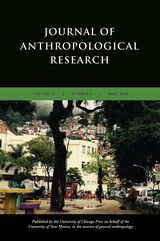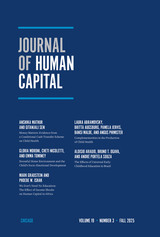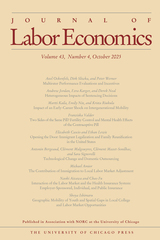4 books about Weststeijn, Thijs
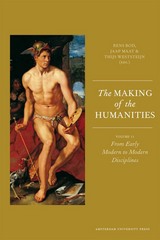
The Making of the Humanities
Volume II: From Early Modern to Modern Disciplines
Edited by Rens Bod, Jaap Maat, and Thijs Weststeijn
Amsterdam University Press, 2013
While it is clear that around 1800 the humanities as a discipline rose to prominence, it is less clear what the exact nature of this shift in academia was. Was it a sudden revolution caused by a momentary but powerful change in the zeitgeist or the turning point of a much longer process? In this volume, the editors have selected a series of essays that look at the origins of the humanities and find that long before 1800 the concept of the humanities was already at the fore. The shift around 1800 was thus mostly institutional, not theoretical. The Making of the Humanities traces this new finding through a broad range of disciplines including literary theory, linguistics, art history, and musicology.
[more]
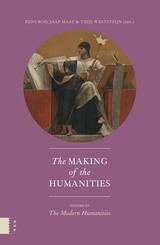
The Making of the Humanities, Volume III
The Modern Humanities
Edited by Rens Bod, Jaap Maat, and Thijs Weststeijn
Amsterdam University Press, 2014
This comprehensive history of the humanities focuses on the modern period (1850-2000). The contributors, including Floris Cohen, Lorraine Daston and Ingrid Rowland, survey the rise of the humanities in interaction with the natural and social sciences, offering new perspectives on the interaction between disciplines in Europe and Asia and new insights generated by digital humanities.
[more]
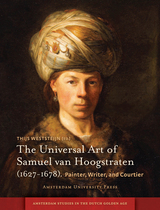
The Universal Art of Samuel van Hoogstraten (1627-1678)
Painter, Writer, and Courtier
Edited by Thijs Weststeijn
Amsterdam University Press, 2013
Samuel van Hoogstraten was not only one of Rembrandt’s most successful pupils but also a versatile painter in his own right. His experiments in optical illusion also attracted the interest of the natural scientists of his time, and he wrote some of the first Dutch novels, plays, and a treatise on painting. This rich interdisciplinary study examines how van Hoogstraten understood the relationship between art, literature, and science and how these reflected the general views of his time. Bringing to the fore hitherto unknown works, the book is an important contribution to our understanding of van Hoogstraten’s life and art.
[more]

The Visible World
Samuel van Hoogstraten's Art Theory and the Legitimation of Painting in the Dutch Golden Age
Thijs Weststeijn
Amsterdam University Press, 2008
How did painters and their public speak about art in Rembrandt’s age? This book about the writings of the painter-poet Samuel van Hoogstraten, one of Rembrandt’s pupils, examines a wide variety of themes from painting practice and theory from the Dutch Golden Age. It addresses the contested issue of ‘Dutch realism’ and its hidden symbolism, as well as Rembrandt’s concern with representing emotions in order to involve the spectator. Diverse aspects of imitation and illusion come to the fore, such as the theory behind sketchy or ‘rough’ brushwork and the active role played by the viewer’s imagination. Taking as its starting point discussions in Rembrandt’s studio, this unique study provides an ambitious overview of Dutch artists’ ideas on painting.
The Visible World was awarded the Jan van Gelder Prize in 2009.
“Thijs Weststeijn’s book … is destined to become one of the principal bibles for those who even remotely wish to read and understand Samuel van Hoogstraten’s thinking … written in clear, elegant language”, Jan Blanc in Simiolus 33/4 (2007-8).
“By asking purposeful questions about Dutch Baroque art theory and Van Hoogstraten’s place within it, Thijs Weststeijn has provided convincing and thoughtful answers, and made a most appreciated and masterful contribution to the field.” Amy Golahny in Sehepunkte 10 (2010), nr. 6.
“[Weststeijn] shows persuasively how Van Hoogstraten’s Inleyding is rooted in the tradition of classical rhetoric and philosophy … Chapters about aspects discussed in detail in the Inleyding, such as pictorial imitation, coloring and the depiction of emotion, reveal that Van Hoogstraten’s perspective on the theory of art was an idiosyncratic one … Weststeijn supposes at various moments in his book that Samuel van Hoogstraten wanted in particular to provide a legitimation for Rembrandt’s painting practice by writing down the ideas that he must have heard in the latter’s studio.” Bram de Klerck in NRC Handelsblad, 13 February 2009.
The Visible World was awarded the Jan van Gelder Prize in 2009.
“Thijs Weststeijn’s book … is destined to become one of the principal bibles for those who even remotely wish to read and understand Samuel van Hoogstraten’s thinking … written in clear, elegant language”, Jan Blanc in Simiolus 33/4 (2007-8).
“By asking purposeful questions about Dutch Baroque art theory and Van Hoogstraten’s place within it, Thijs Weststeijn has provided convincing and thoughtful answers, and made a most appreciated and masterful contribution to the field.” Amy Golahny in Sehepunkte 10 (2010), nr. 6.
“[Weststeijn] shows persuasively how Van Hoogstraten’s Inleyding is rooted in the tradition of classical rhetoric and philosophy … Chapters about aspects discussed in detail in the Inleyding, such as pictorial imitation, coloring and the depiction of emotion, reveal that Van Hoogstraten’s perspective on the theory of art was an idiosyncratic one … Weststeijn supposes at various moments in his book that Samuel van Hoogstraten wanted in particular to provide a legitimation for Rembrandt’s painting practice by writing down the ideas that he must have heard in the latter’s studio.” Bram de Klerck in NRC Handelsblad, 13 February 2009.
[more]
READERS
Browse our collection.
PUBLISHERS
See BiblioVault's publisher services.
STUDENT SERVICES
Files for college accessibility offices.
UChicago Accessibility Resources
home | accessibility | search | about | contact us
BiblioVault ® 2001 - 2025
The University of Chicago Press


